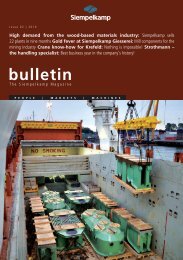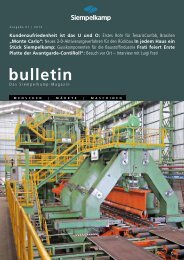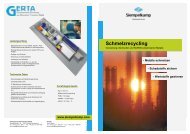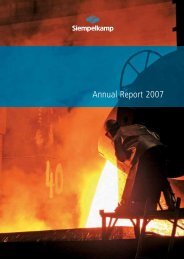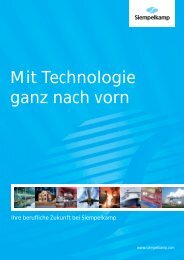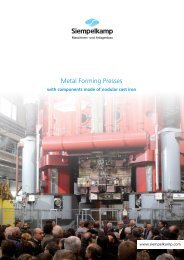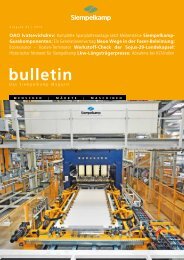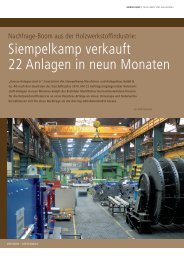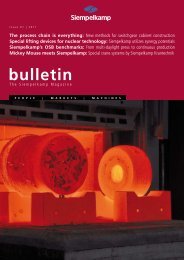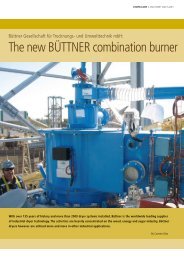Annual report 2009 - Siempelkamp
Annual report 2009 - Siempelkamp
Annual report 2009 - Siempelkamp
Create successful ePaper yourself
Turn your PDF publications into a flip-book with our unique Google optimized e-Paper software.
Pattern making Molding shop Casting simulations<br />
Shared engineering – for best possible customer benefi ts<br />
All departments involved in product development take part in an intensive exchange of ideas and experiences. From the beginning on<br />
we connect the frame criteria of the casting technology, such as the pouring position and allowable stresses, with the needs of our<br />
customers. We call this integrated development ‘Shared Engineering’. In order to supply our customers with the best-possible solutions,<br />
teamwork ranks fi rst for us. Furthermore, the certifi cation according to DIN EN ISO 9001 guarantees a reproducible production process<br />
in all areas of the <strong>Siempelkamp</strong> Foundry.<br />
This process offers a large degree of design freedom and allows comparatively thin and stable structures, for example, in the center of<br />
a casting as well as in highly stressed places. Varying cross sections can be streamlined in order to minimize stress concentrations.<br />
Pattern making represents the beginning of our services following the engineering: First designs lead to 3-D models which are<br />
introduced to our customers before the detailed development starts. With the help of FEM calculations, the models are stressed under<br />
simulated working conditions with static and dynamic stresses. During the next step, our engineers test the model in a prototype<br />
simulation. Thereupon, the forces, required services as well as the dimensions of the component parts take shape.<br />
According to the resulting calculations, wooden patterns are constructed which are available to the molding shop of the foundry after<br />
comprehensive testing. The next step involves the mold making. During this process, precision and cost control have to be conciliated.<br />
In order to keep the production costs as low as possible, optimized molding pits or boxes are used for the casting. This process step<br />
has an early infl uence on the quality of the fi nished casting, and therefore requires high precision. Questions involving the best pouring<br />
position and the arrangement of the foundry cores have to be answered at this time. Last but not least the order and geometry of the<br />
casting sprues determine how the molten iron fl ows into the pattern, how it is being distributed and fi nally, how it cools.<br />
Nodular graphite cast iron: competence with international standing<br />
Let us now focus on the material and process and with it on our core competence, which is casting with nodular graphite cast iron. As<br />
one of the world’s biggest hand-molding foundries, <strong>Siempelkamp</strong> has specialized in the casting of large structural components made<br />
of cast iron with nodular graphite. Our casters have the specifi c metallurgic know-how to set the optimal conditions for the solidifi cation<br />
process during crystallization of the matrix and the graphite nodules even for thick-walled components. There are only a few foundries<br />
in the world that have this specifi c knowledge! Some of our castings have been true records.




